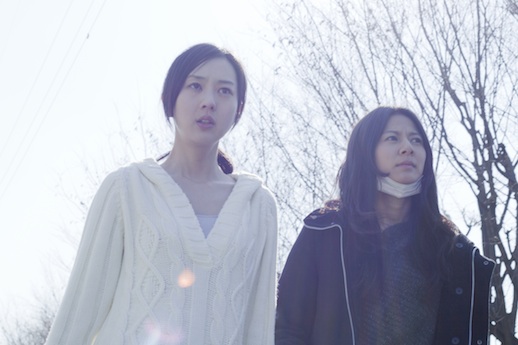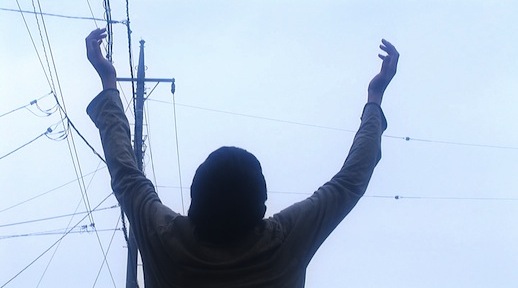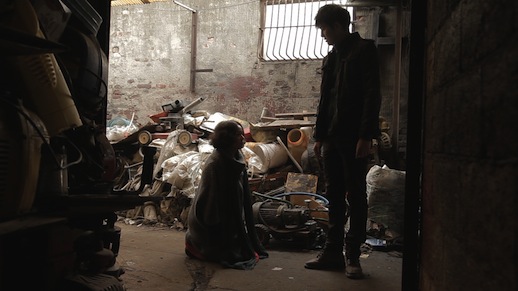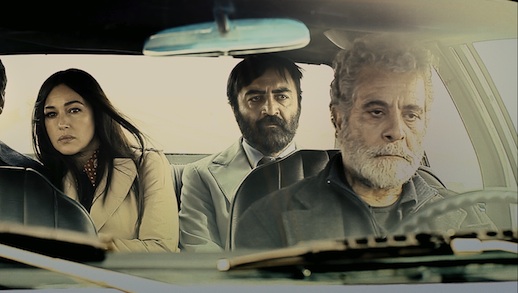FILMeX 2012: The Dilemma of the Niche
Since its inception, Tokyo FILMeX has been a festival for cinephiles and film-goers curious about Asian independent cinema. The program occupies a niche between the highly commercial and industry-oriented Tokyo International Film Festival and the more indie- and Japan-centric Pia Film Festival. This has been fertile ground, and today FILMeX is the largest festival in Japan dedicated to screening new arthouse films from Asia.
Especially compelling in this year’s selection were Ki-duk Kim’s Pieta, which won the Golden Lion at Venice, the FILMeX audience award, and Kurdish filmmaker Bahman Ghobadi’s visually stunning Rhino Season. Yet, instead of praising the best of FILMeX — and there is much to praise — a more pressing matter at hand concerns the recent Japanese films and the predicament they pose for domestic cinema. Of the five films from Japan in the main program, three of them illuminate the dilemma of contemporary indie cinema most clearly: Nobuteru Uchida’s Odayaka, Izumi Takahashi’s I am not the world you want to change, and Tatsushi Omori’s Bozo. What is this dilemma, you ask? Read on.

Possibly the most compelling of the Japanese entries in the FILMeX Competition, Uchida’s Odayaka explores the social dimensions of the “radiation panic” that followed the Fukushima disaster. Rather than employing documentary realism or transporting us directly to the front lines in Tohoku, Uchida uses a fictional, naturalistic mode to paint the slow descent of the nuclear crisis on an ordinary Tokyo neighborhood. Two young women, neighbors but strangers to each other, find themselves abruptly isolated in their concerns about the invisible threat of radiation. Facing discord with their domestic partners and at pains to reconcile the mass media discourse with raw and frightening information on the Internet, they are thrown into conflict with an indifferent and uncritical society.
For anybody who endured the nuclear summer of 2011 in Tokyo, tasting that special stubborn flavor of nationalism leavened with an unwillingness or inability to question NHK, the first half of Odayaka resonates easily. While the film succeeds in conveying the alienation that is part and parcel of post-Fukushima radiation anxiety, its melodramatic denouement is less than satisfying. The mood of panic builds into a hysteria that ultimately overtakes the logic of the story. Still, the difficulty posed by Odayaka is not so much its emotional “pitch” as something more diffuse, more systemic in contemporary indie cinema — perhaps more like the radiation passing invisibly through the story of this film. To measure this problem, we need to turn our film-critical geiger counters toward the other Japanese entries in the festival selection.
FILMeX is a sizable festival, yet sufficiently focused that one can get a sense of how different attendees and journalists respond to the films. This was abundantly clear in the case of Takahashi’s I am not the world you want to change, for which the post-screening consensus of foreign viewers struck equal notes of exasperation and dismay (see, for example, Tom Mes’ review at Midnight Eye). Followers of recent indie cinema in Japan may have been surprised, since Takahashi’s previous films have been well received. In collaboration with Hiromasa Hirosue, Takahashi’s The Soup One Morning (2004) and What the Heart Craves (2007) won acclaim at Pia, the Vancouver International, and the Cinema Digital Seoul Festivals.

Filmed in a low-budget style similar to that of his earlier works, Takahashi’s I am not the world is ostensibly a revenge story for twenty-somethings. At the same time, it also gestures toward social commentary on the problem of ijime (bullying) in Japanese schools. The rambling, multi-threaded plot revolves around a mysterious young woman who hires a group of fringe characters to abduct and abuse the bully who tormented her in school, nearly ten years before. Motivated by their own unresolved anger about being victimized — or simply a need for quick cash — the crew are directed to videotape the punishment and upload the results to the Internet. The aim of this anonymous action is not merely personal revenge, but to put bullies everywhere on notice that they too could meet a similar fate. Unsurprisingly, the surrogate victim-torturers come into conflict with each other when the punishment spirals out of control. Although I am not the world contains some interesting ideas, their execution is uniformly disappointing. As a group, the characters and their individual conflicts never become credible, the claim that bullying stems from repressed homosexuality comes across as more ridiculous than revealing, and at a technical level the film is sloppy.

Taken together, these three films express one of the dilemmas of independent film as it exists in Japan today. We can grasp this through two interrelated issues. First, there is the matter of the video aesthetic. It seems almost banal to discuss technique, but there is a growing tendency in Japanese indie production to dispense with the basics of film craft: image quality, lighting, camerawork, and sound. Here, the desired aesthetic is that of a low-end camcorder, with its drab, shaky image and tinny audio. Lighting, if it is used at all, seems designed to intensify the camcorder effect. In the 13th FILMeX program, the best example of this is I am not the world you want to change, though the same could easily be said about Tetsuaki Matsue’s Tokyo Drifter (2011), Yosuke Okuda’s Tokyo Playboy Club (2011), and Ryūichi’s aforementioned River. While it is true that budgets for indie films in Japan are now extremely limited, video camera technology has improved and the lo-fi aesthetic has become a deliberate choice. This is unambiguous if we compare these films with Kim Ki-duk’s similarly low-budget Pieta (produced for less than USD 150K). For Kim, craft is important: camera and editing are tightly controlled, and even when the film image is wintery, it remains rich, luminous. Under his gaze, a grim metal shop in Seoul’s Cheonggyecheon district can emanate a rusty warmth.

Naturally, it could be argued that the lo-fi aesthetic has a long and venerable history in cinema, but certainly there is difference between the lyricism of a murky film like Cassavettes’ Shadows (1959) and the shabbiest camcorder image of 2011, which lacks the photographic power of celluloid to capture and hold our gaze. It may be that the effect is not so much technical as it is economic: television and now youtube have cheapened the lo-fi video image. Once upon a time, this aesthetic could also have been considered oppositional, but as video has become ubiquitous and as the film world is being strong-armed to embrace the faux-utopia of digital cinema, the oppositional gesture today might rather be a renewed commitment to celluloid. If the rationale for the lo-fi tendency in recent Japanese indie film is unclear, there is nevertheless a whiff of hipsterism in it. That is, by eschewing craft, the idea seems to be that raw, immediate self-expression is more important, and that craft is somehow incidental or even getting in the way of the “authentic” expression of “feeling”.
When, for example, Matsue describes his intentions for Tokyo Drifter, he says that the choice of a camcorder with auto-focus and a noisy built-in mic “reflected everyone’s feelings” during the setsuden of 2011, when people were afraid of the rain and radiation. However sincere the attempt to depict and affirm a new, “weak” Tokyo under setsuden may be in this work, the obvious question is how the audience could be expected to grasp that a shabby image, auto-focus, and noisy sound signify the feeling or mood of setsuden. This studied indifference to craft, then, risks coming across as formalism or mere self-indulgence. Thankfully, recent installments of FILMeX have also brought us the works of directors like Toshiaki Toyoda, who remain concerned with the craft of the image.
The second issue dogging recent indie films is that they seem intended primarily for a very small domestic audience. Thinking back over the last five years of Japanese indie cinema at FILMeX, it seems clear that these films are, for the large part, not made to reach an international audience. Accordingly, the majority of these films cannot and will not find distribution outside of Japan. Yes, they will screen in film festivals, especially in programs devoted to Japanese cinema, but that is perhaps all. Their aspiration is not to be outward-facing works that could travel and get recognition in Venice (as Kim’s Pieta did this year). Nor is it to push the envelope of genre film, reaching a potentially large audience but ruffling their feathers too. The aspiration seems to be more about making smaller, almost personal films for friends. It seems to be about finding fans, rather than reaching an audience.

The apparent reason for favoring these types of films in a festival like FILMeX is that the programmers wish to encourage and promote the work of younger directors. This appeared to be part of the decision to include Takahashi’s I am not the world you want to change in this year’s Competition. When the student jury then selected this film and praised its “universality” (a trite judgement about an artwork if there ever was one), Takahashi-san came on stage to receive the award and vowed to continue making this type of ultra-low-budget film. In other words, recognition at FILMeX wasn’t impetus to seek a more expansive frame, it was impetus to do more of the same.
This, then, is the dilemma of the lo-fi tendency. Instead of trying to do more with less, it seems content to build a kind of exclusivity around less. Within the broader restructuring of global film markets now underway, this translates into an ever-smaller audience of “followers”, kept in the loop via micro-networks on social media or specialized festival venues. In the larger scheme of things, this is not a winning hand.
Coming up in 2013: Odayaka, I am not the world you want to change, and Bozo at Eurospace in the spring; In Another Country, Three Sisters, Rhino Season and Pieta will open in Tokyo during the spring and summer at venues to be announced.
M. Downing Roberts
M. Downing Roberts



